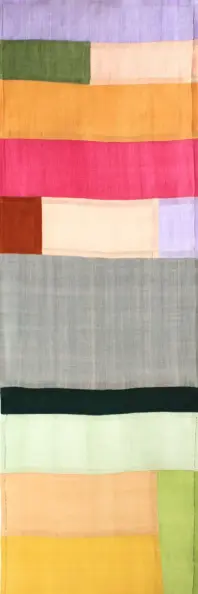



Premium design education at honest prices - launch your career.

Some become job-ready in 1 year, others take 3–5 years depending on the course, exposure, and personal growth.

Internships, live projects, styling shoots, and assistant roles shape you into a professional.

Quality mentorship, strong institutes like NIF Global Borivali, and a proactive mindset can fast-track your success.

Success comes from skill, experience, discipline, and consistent evolution—not just creativity or style.
“How long will it take me to become a professional fashion designer?”
It’s a question every aspiring designer asks at the beginning of their journey. And it’s a smart question—because fashion design isn’t just about sketching pretty clothes or getting a certificate. It’s about transforming your creativity into a career, developing your style, and building the skills and confidence to succeed in a competitive industry.
Becoming a professional fashion designer is not about how fast you finish a course—it’s about how well you grow through each stage of learning and practice.
Some people become job-ready within a year, while others may take three to five years to truly find their niche—whether it’s apparel design, styling, textile innovation, or launching their fashion label.
Several factors influence this timeline:
In a city like Mumbai, where fashion meets business, art, and culture, students can learn both theory and application side by side. And if you’re studying in areas like Borivali, where institutes like NIF Global Borivali offer industry-aligned, hands-on programs, your path to professionalism can be even more focused and streamlined.
So how long does it take? Let’s break it down step by step—so you know exactly what to expect and how to prepare for your dream career in fashion.
Selecting the right fashion design course is your journey’s first and most crucial step. This is where your foundation is built—and it can significantly impact how quickly and effectively you grow into a professional designer.
This stage can take anywhere from 6 months to 4 years, depending on the type of course you choose.
Let’s break down your options:
These are short-term, skill-based programs designed for students who want to explore fashion design or sharpen specific skills such as:
Certificate courses are ideal for:
However, since these courses cover only the basics, you may still need additional training or hands-on experience to compete professionally.
Keywords to note: short-term fashion design course Mumbai, fashion designing training Borivali
A fashion design diploma in Mumbai offers a more comprehensive approach to learning. These programs usually include:
Most diploma programs also include live projects and internships, making them a practical and career-oriented choice for students who want to enter the industry faster.
Many students in Borivali and nearby areas choose diploma courses because they offer a balance of depth, affordability, and hands-on training.
Keywords to note: fashion design diploma Mumbai, practical fashion design training, best fashion design institutes Mumbai
A full-time Bachelor’s degree in Fashion Design is a great choice if you’re looking for deeper academic and industry exposure. These courses go beyond design techniques to include:
A degree offers a broader career scope and is often preferred by students who want to pursue the following:
The longer duration of a degree course allows students to explore multiple specializations, build a more diverse portfolio, and graduate with a well-rounded understanding of the industry.
Keywords to note: fashion design degree Mumbai, fashion design course duration, advanced fashion design training
Quick Tip: Don’t choose a course just based on duration—choose one that matches your career goals, learning style, and timeline. When done right with the right mentorship and practice, a one-year diploma can be more impactful than a three-year degree done passively.
Completing your course is just the beginning—real transformation happens when you step outside the classroom and into the industry. This phase involves applying your skills, building experience, and discovering your strengths through real-world fashion work.
Whether you’ve completed a fashion design diploma in Mumbai or a full degree course, industry exposure will play a key role in shaping you into a confident and capable professional.
Here’s what this stage usually includes:
One of the most valuable steps after (or even during) your course is interning with a professional designer, boutique, or fashion brand.
You’ll learn how collections are conceptualized, how fittings are conducted, how garments are finalized, and how real-world deadlines work. Many top fashion designing training institutes in Mumbai integrate internships into their curriculum for this very reason.
As an intern, you may be assisting with:
Keywords to note: fashion internships Mumbai, real-world fashion training, internship after fashion design course
Working on live projects exposes you to brand expectations, client briefs, and teamwork dynamics. These assignments may come from fashion retailers, styling agencies, export houses, or even e-commerce brands.
Live projects help students:
Some fashion design institutes in Borivali and Mumbai regularly collaborate with brands to offer live assignments to their students—a huge advantage during your early career stage.
Participating in fashion shows or styling assignments for photo shoots helps you:
These experiences give you a backstage view of the fashion world, boosting your confidence and network.
Even if you don’t land a full-time job immediately after your course, don’t hesitate to take freelance or assistant-level roles. These roles help you:
Even small freelance gigs can open doors to bigger opportunities down the line.
No matter how talented you are, the industry trusts experience. The more projects, internships, and collaborations you participate in, the more confident and employable you become. This stage is the bridge between your training and professional identity.
After completing your course and gaining hands-on experience through internships and live projects, you enter the most rewarding—and sometimes most challenging—phase of your journey: turning your passion into a recognized profession.
This stage is about having technical skills and building your reputation, finding your niche, and confidently calling yourself a fashion professional.
Here’s what typically happens during this phase:
Many fashion graduates begin by joining a designer’s team or working with a fashion retail brand in assistant roles. Over time, they grow into independent design responsibilities.
These early roles allow you to:
Some students continue in fashion merchandising, visual styling, production coordination, or marketing roles based on their strengths.
During these years, you slowly discover what you love most—whether it’s:
Your style becomes more distinct, and your portfolio reflects that identity. You start gaining recognition among peers, mentors, and industry contacts.
For many, the goal is eventually to start a personal label or boutique. This usually happens 3–5 years into the career once you’ve built experience, confidence, and a network.
Starting your fashion line involves:
Students who have completed practical, industry-connected programs—such as a fashion design diploma in Mumbai—often make this transition easier, as they’ve already had real-world exposure and mentorship.
Many professionals also grow into fashion stylists, visual merchandisers, image consultants, or fashion educators. Some go on to work in fashion journalism or content creation, combining design with media and storytelling.
This phase is also where advanced certifications or short-term specialized courses can help you gain a deeper understanding of your chosen area.
On average:
But remember—success is not about speed, it’s about direction and consistency.
Becoming a professional fashion designer is not a race—it’s a creative evolution. However, several factors can affect how quickly you reach your goals. Some of these are within your control, and your environment shapes some.
Here’s what plays a big role in determining your pace:
The quality of your training impacts everything. An outdated or too theoretical course might leave you unprepared for the real world. On the other hand, an institute offering industry-oriented fashion design diploma programs in Mumbai can fast-track your career by blending technical learning with real-world experience.
Look for programs that emphasize:
Tip: A focused one-year diploma from a strong institute can be more impactful than a 3-year degree without practical learning.
A great mentor can dramatically shorten your learning curve. If your trainers are experienced designers, stylists, or industry experts, you’ll gain knowledge far beyond textbooks.
Strong mentorship helps you:
Students who get early internships, participate in live projects, and volunteer at fashion events tend to learn faster. Every project you do outside the classroom adds a layer of real-world understanding and boosts your resume.
If you’re studying in Mumbai—especially with institutes like NIF Global Borivali—you have easy access to fashion houses, events, and industry experts, which naturally accelerates your journey.
Let’s be honest—talent is important, but discipline matters more. The students who:
Motivation and passion help, but a daily commitment to learning and improving shapes a designer.
If you’re clear from the beginning that you want to specialize in bridal design, textile development, or fashion marketing, you’ll reach your goals faster. But if you’re still exploring your interests (which is completely okay), your journey may take a little longer—but it will be more self-aware and fulfilling.
Also, if you take up part-time work or other commitments alongside your training, your pace may naturally adjust—but remember, growth at your own pace is still growth.
From the outside, fashion design often looks like a dream career—glamorous shows, celebrity styling, glossy magazines, and luxury brands. But behind that sparkle is a lot of hard work, discipline, and years of consistent effort.
Many students enter fashion schools expecting instant fame. But reality unfolds very differently. Let’s separate the glamorous myths from the grounded truth so you start your journey with the right mindset.
Reality: A course gives you skills—not stardom.
The industry is competitive, and even the most talented designers take years to build their brand or recognition. Your growth begins after your course through internships, networking, experience, and consistency.
Reality: Fashion is a multi-layered industry.
A professional designer must know fabric behavior, construction techniques, client handling, market trends, merchandising strategies, and more. Good courses—like a fashion design diploma in Mumbai—train you in all these aspects, not just sketching.
Reality: Creativity needs direction, structure, and discipline.
You may be talented, but creativity won’t convert into a career without proper training, mentorship, and practice. Success in fashion is about how well you apply your creativity to real-world problems and trends.
Reality: There are many rewarding paths in fashion.
You can become a stylist, merchandiser, illustrator, fashion marketer, or even an educator. A professional journey in fashion can take many shapes—and success isn’t limited to having your name on a brand tag.
Reality: Everyone grows at their own pace.
Some students shine early, and others take time to find their strengths. It’s okay. Fashion is not a race—it’s a personal, evolving journey. The key is to keep learning, adapting, and moving forward.
Yes! A diploma—especially from an industry-focused institute—can be enough to start your career, provided you gain internships and build a strong portfolio.
Absolutely. Many students take freelance or assistant roles alongside their course. It helps build experience early on.
Not at all. Many successful designers work in styling, merchandising, fashion marketing, education, or content creation.
Shweta More is an Indian fashion and interior design expert with a keen eye for aesthetics and innovation. With years of experience in the industry, she specializes in blending timeless traditions with contemporary trends, helping individuals and brands craft unique style identities.
Her expertise spans across various fashion specializations, including haute couture, sustainable fashion, and athleisure, while her interior design work focuses on transforming spaces with elegance, functionality, and cultural depth. Shweta is passionate about guiding aspiring designers, offering insights into career growth, industry shifts, and creative inspirations.
When she’s not immersed in the world of fashion and interiors,Shweta enjoys traveling to global design hubs, exploring art, and experimenting with new materials and techniques.
WhatsApp us
